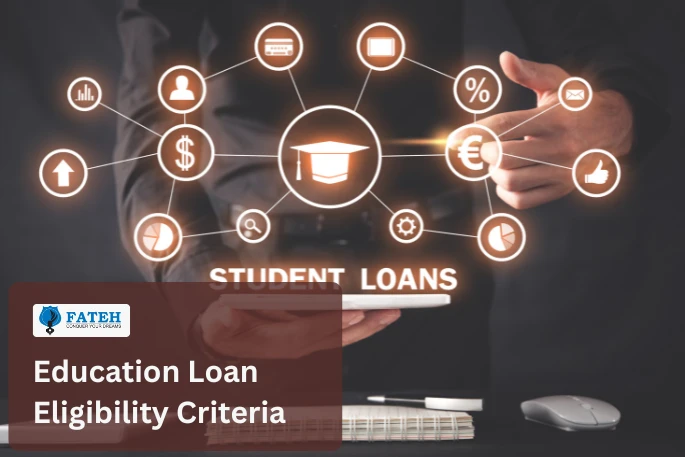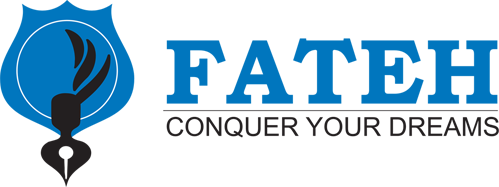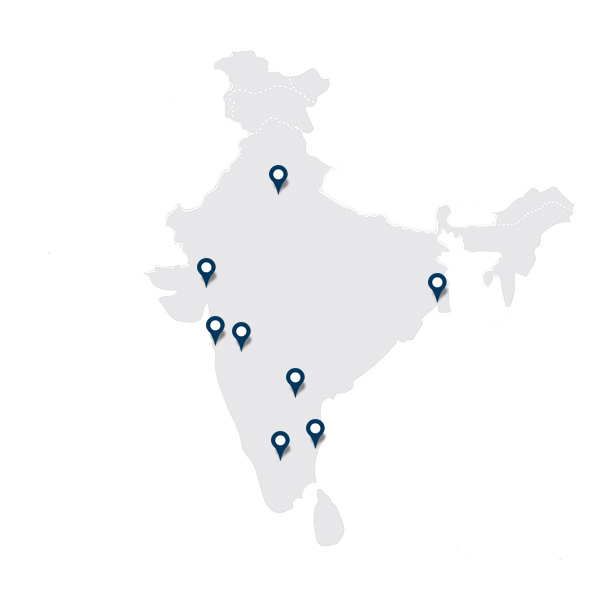Education Loan Eligibility Criteria

Core Eligibility Criteria: Education loans in India require applicants to be Indian citizens, usually aged 18–35, with a solid academic record and confirmed admission to a recognised institution. A co-applicant—typically a parent or guardian—is generally mandatory and their income stability is crucial for approval.
Factors That Influence Approval: Lenders closely assess academic performance, the reputation of the chosen course and institution, admission status, and the financial profile of the co-applicant. Age, nationality and the ability to provide necessary documentation also play a significant role.
How to Boost Your Chances: Focus on maintaining strong grades, choosing accredited, career-focused courses and ensuring your co-applicant has a stable income and good credit score.
Education Loan for Abroad Studies

Loan Coverage and Types: Education loans for abroad studies cover tuition, living costs, travel, insurance and more. There are secured loans (with collateral) offering higher amounts and lower rates and unsecured loans (without collateral) suited for students at top universities.
Interest Rates, Repayment and Tax Benefits: Interest rates range from 9% to 14.5%, with repayment starting after a moratorium period. Loans offer flexible repayment options, including tax deductions under Section 80E for interest paid. Having a strong co-applicant and accurate documents can improve loan terms.
Application Process and Flexibility: To apply, shortlist lenders, submit complete documents and undergo verification. The process may be done online or in-person. With options for prepayment and early closure, loans can be managed for long-term financial ease.
Scholarships for MBA

Why Scholarships Matter: Scholarships—merit-based, need-based and diversity-focused make studying MBA abroad more affordable, allowing Indian students to focus on learning and career growth rather than financial strain.
Top Scholarships & Destinations: UK and Irish universities offer generous scholarships including Chevening, Skoll, and UCD Smurfit awards. Funding ranges from partial tuition waivers to fully funded programmes. Prestigious schools like LBS, Oxford, Cambridge, Trinity and Imperial feature prominently.
Winning Strategies: A strong GMAT/GRE score, authentic essays, leadership experience, and early, tailored applications are essential. Indian students should prepare required documents meticulously and practise for interviews to maximise their scholarship chances.
Difference between MS and MBA

Depth vs Breadth: An MS focuses on deep technical expertise, allowing you to specialise in fields like artificial intelligence or data science. On the other hand, an MBA offers a broader, interdisciplinary approach and builds leadership, strategic thinking and business acumen across areas like operations and innovation.
Career Goals: If your aim is to pursue technical, research, or specialist roles—especially in STEM—an MS is the better fit. But if you’re looking to move into leadership, switch industries, or start your own venture, an MBA is more aligned with those goals.
ROI & Experience: MS programmes typically suit fresh graduates with strong academic backgrounds. They often offer a quicker return on investment and faster entry into the workforce. In contrast, MBAs are designed for professionals with 3+ years of work experience.
Bar Graph PTE: Practice Samples & Tips to Speak Effectively in Describe Image Task

Master the Format and Scoring Criteria: The Bar Graph PTE Describe Image task evaluates a candidate’s ability to interpret and articulate key trends, comparisons and data relationships within a 40-second speaking window. Scoring focuses on content relevance, oral fluency and pronunciation.
Identify Bar Graph Types and Spot Key Trends: Bar graph types vary—vertical, horizontal, grouped or stacked—each requiring tailored approaches for spotting extremes, patterns and meaningful comparisons. Effective analysis begins with the title and axes, followed by recognising trends and contrasts.
Use Structured Strategies and Effective Vocabulary: A strong response follows a three-part structure: introduce the graph’s theme, highlight main trends using comparative language, and conclude with an overall insight. Strategic vocabulary and transition phrases elevate fluency.

